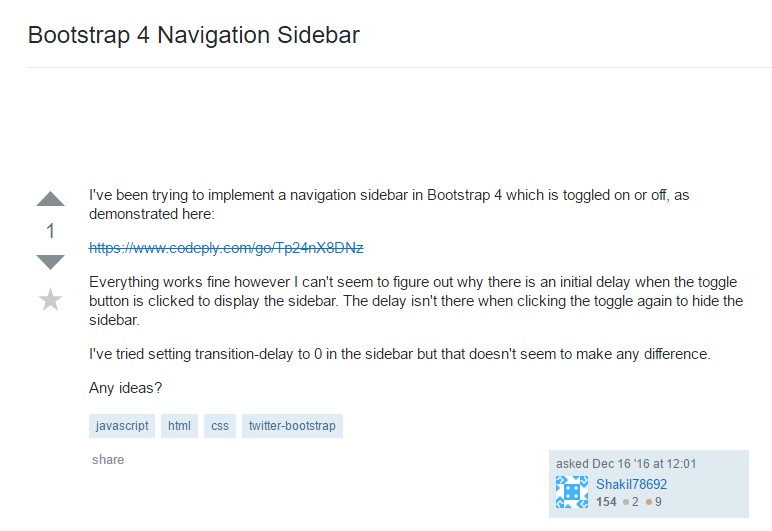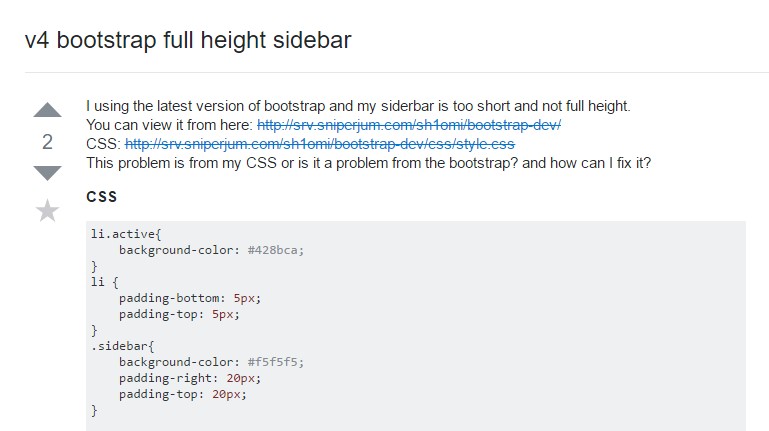Bootstrap Sidebar Working
Introduction
Inside the majority of the webpages we recently spot the material escalates from edge to edge in width with a handy navigating bar just above and simply just simply gets resized once the determined viewport is reached so that practically the showcased web content fluently applies the full width of the webpage readily available. Nevertheless at a specific events the wanted target the webpages must serve require together with the fluently resizing material location a different component of the provided screen width to get selected to a still vertical component together with certain urls and content in it-- in other words-- the well-known from the past Bootstrap Sidebar component is required. ( learn more)
Ways to apply the Bootstrap Sidebar Responsive:
This is somewhat outdated method however in the case that you truly need to-- you can set up a sidebar element with the Bootstrap 4 framework that together with its flexible grid system additionally provide a number of classes intendeded especially for establishing a secondary rank site navigation menus being docked around the webpage.
But why don't we start it easy-- through just nesting some rows and columns -- It is expected this could be the best method. And also by nesting I indicate you are able to gave a
.rowAnd so let's say we desire a right aligned Bootstrap Sidebar Collapse having several web content within it and a basic page to the left of it. We must establish the grid tier down to what we want to keep this alignment right before the sidebar and the primary information stack above each other-- let's say-- medium and up. Therefore a workable manner attaining this might be this:
1st we need a container component to maintain the rows and columns and since we are definitely developing something a little bit more complex the
.container-fluidNext we need a
.row.col-md-9.col-md-3Next in these columns we are able to just produce some supplemental
.rowA handful of other ideas
Additionally in case you need to create a sidebar navigation menu along with the desired
.col-*.sidebar<main>.col-*Also in case you have to develop a sidebar navigation menu along with the needed
.col-*.sidebar<main>.col-*Inspect a few video short training relating to Bootstrap sidebar
Related topics:
Add in off-canvas navigation sidebar ingredient

Stackoverflow: Bootstrap 4 Navigation Sidebar

V4 Bootstrap full height sidebar

